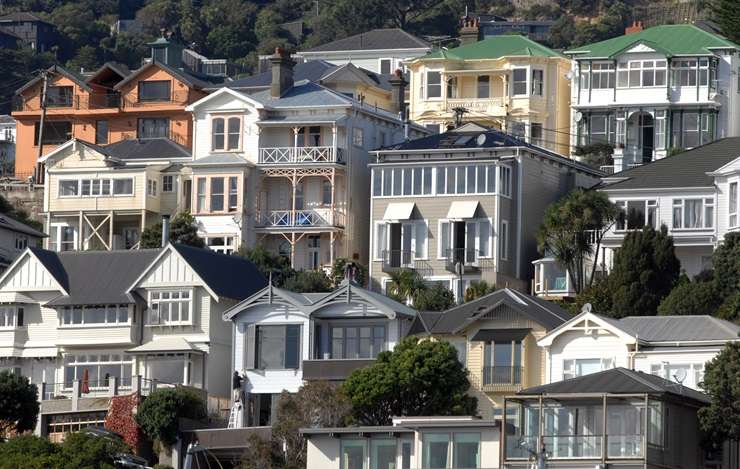- House prices rose 0.6% to $967,000 in February, driven by falling interest rates and high listings.
- Auckland's average value increased 1.2% to $1.303 million, while Canterbury and Wellington saw declines.
- West Coast led growth with a 2.1% rise to $485,000, remaining the most affordable region.
New Zealand house prices enjoyed a modest bounce in February, as buyers made hay of falling interest rates and record-high listings.
Start your property search
The nationwide average property value grew 0.6% ($6000) to $967,000 in the last three months, according to the latest OneRoof-Valocity house price figures.
Some regions performed better than others. Auckland’s average property value jumped 1.2% ($16,000) to $1.303 million due to strong sales in the sub-$1m market and a busier-than-usual start to the year.
Other parts of the country have started 2025 more slowly, with the holiday lull putting downward pressure on property values.
Canterbury’s average property value fell 0.3% ($2000) to $787,000, after recording a 0.6% rise in the three months to the end of January.
Wellington also stumbled. Last month, the quarterly rise in the region was 1.6% but volatility in the market has seen values dip 0.6% to $859,000 in the three months to the end of February.
West Coast is still the reigning champion for house price growth. The average property value in what is still the most affordable part of the country grew 2.1% ($10,000) to $485,000 over the quarter. Values in the region were also up 7.5% annually.
House sales figures from the Real Estate Institute of New Zealand suggest buyers are active, especially in the $500,000 to $1m price bracket, and while the share of sales in the $1m-plus bracket has shrunk year-on-year, the actual number is up.

House prices in Wellington City have come under pressure. Photo / Getty Images

OneRoof editor Owen Vaughan: "Falling interest rates appear to be doing much of the heavy-lifting work, persuading buyers that now is the time to make a move." Photo / Fiona Goodall
OneRoof editor Owen Vaughan said vendor confidence in the market appeared to be holding. "The number of new homes coming to market in February was 8% lower than a year earlier, but the tally is still strong compared to the long-term average," he said.
"The biggest annual dip in new listings was in Auckland, with the number of new homes coming to market in the city down 14% compared to the 4.6% drop for the rest of the country. Auckland’s year-on-year plunge is, perhaps, more to do with last year’s new listings spike in the city and the growing realisation among vendors there that the market is saturated."
Total listings on OneRoof remain at near-record levels. Nationwide there are more than 43,000 residential properties for sale, while in Auckland the total is close to 15,000.
Vaughan said affordability was still a hurdle for many would-be buyers, but the housing market’s resilience was noteworthy. "Falling interest rates appear to be doing much of the heavy-lifting work, persuading buyers that now is the time to make a move. Banks had been aggressively cutting home loan rates in the lead-up to February’s OCR reduction. But the Reserve Bank’s forecast of a 3% cash rate by the end of 2025, instead of the end of 2026, has led to a new round of cuts and speculation that rates will drop further over the next few months.
"However, economists and industry analysts expect the house price growth to be modest but stable this year, and the Reserve Bank has revised its growth predictions for the market from 7% to 3%."
The OneRoof-Valocity House Value Index figures showed quarterly value growth in just three major metros – Auckland (+1.2%), Dunedin (+0.7%), and Tauranga (+1.3%). Property values in Christchurch, Hamilton, Queenstown-Lakes all dipped less than 1% but values in the capital were down 1.2%.
Wellington City’s slump after posting growth of 2.4% in the three months to the end of January suggests volatility in the market and that vendors and buyers are still reeling from the capital’s CV shock, delivered at the start of February.
Property values grew in more than two-thirds of the country’s suburbs in the last three months, with the biggest increases in Ahuriri, in Napier (+7.8% to $1.109m), and Runanga, in Grey (+7.5% to $328,000). Both suburbs were the top performers in February. The third biggest lift was in Mount Albert, in Auckland (+7.1% to $1.39m).
Runanga also enjoyed the country’s biggest annual value increase (+15.1%), with fellow West Coast suburbs Blaketown (+12.7% to $356,000) and Cobden (+11.6% to $336,000) closely following.
The figures indicate the rate of growth in West Coast’s suburbs is slowing, although it is still well above the rest of the country.
The analysis also identified 27 suburbs where prices reached new heights – up from 20 last month – and another 65 suburbs where prices are less than 5% from their post-Covid peaks.
Most of the suburbs setting new value records were, like last month, in West Coast, Southland and Otago, and at the affordable end of the market.
Growth also continues to accelerate in Omaha and Point Wells, two neighbouring beach suburbs favoured by Auckland’s wealthy. Omaha’s average property grew 6% ($168,000) to $2.94m while Point Wells’ rose 5.6% ($133,000) to $2.5m. Both have seen an uptick in sales over the last three months, with agents notifying OneRoof that big money was changing hands for prized baches.
- Click here to find properties for sale













































































